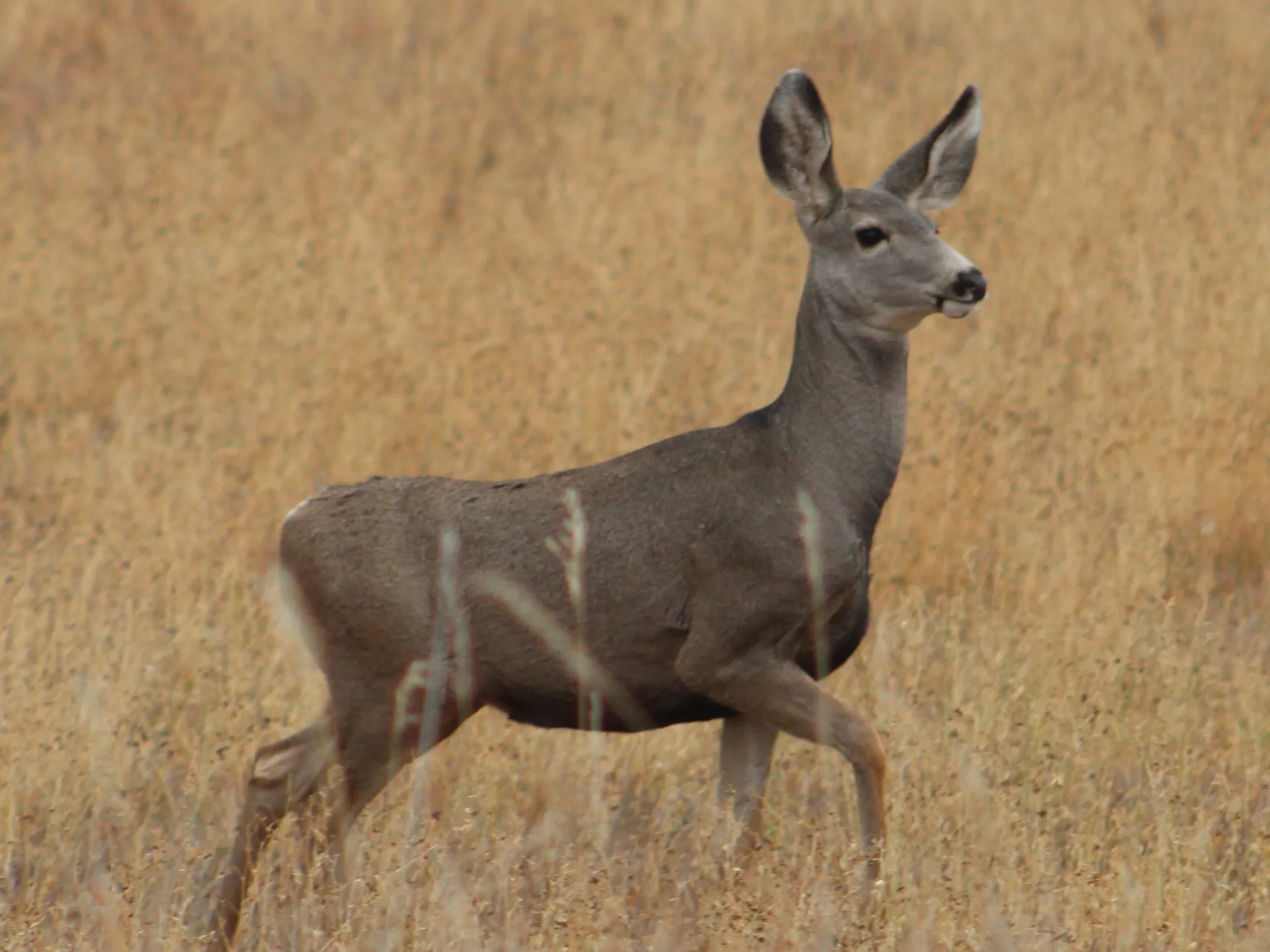
The winter conditions taxed North Dakota’s mule deer herd, and a slow climb out of the trough is expected, even with best conditions in the coming year, as limited habitat is available on the landscape. Simonson Photo.
By Nick Simonson
North Dakota’s deer populations find themselves in a rebuilding phase following the challenging winter of 2022-23, which thanks to significant snowfall and brutal cold temperatures from November into May, resulted in increased mortality of both white-tailed and mule deer across the map. With an accommodating late spring and summer under their feet the herds are poised for a comeback, recovering from the stresses of the cold weather season. That comeback, however, may be limited in both speed and scope by the amount of habitat on the landscape according to Dr. Charlie Bahnson, Wildlife Veterinarian for the North Dakota Game & Fish Dept. (NDG&F).
“Particularly in the western part of the state, it’s been a really good year for moisture. I think the deer that we have on the landscape right now are probably in pretty good shape. That sets us up for some good trends ahead,” Bahnson states about where things sit heading into the fall of 2023.
Compared to 20 years ago, when warmer winters and abundant Conservation Reserve Program (CRP) acres helped both mule deer and white-tailed deer populations soar across the Roughrider state, those marginal acres set aside have dropped from more than 3 million in the to right around 1 million currently. As a result of these variables, tags offered by the NDG&F rose to over 100,000 with some hunters able to pick up four tags in total for certain units. Even just in the last 10 years the decline in habitat has become noticeable and has greatly limited the numbers of deer and other wildlife on the landscape. Unlike even slightly more than a decade ago after challenging back-to-back winters, the climb out of the substantial hole brought on by the past cold weather season will likely be more challenging for deer.
“Even compared to five years ago, we have substantially less CRP and less habitat, and that habitat is really what builds resilience. That’s why when we talk about hard winters in 2009 and ‘10, just in a couple of years we were able to bounce back to really good numbers of deer on the ground which was reflected by license allocation,” Bahnson explains, adding, “unfortunately we’ve been looking at one trend in terms of CRP and habitat and that’s downward. I hate to say it, but I think we’re probably looking at a slower climb even in the best conditions, given what we’ve got on the landscape right now.”
Efforts are underway to turn the tide of habitat loss, despite the limited availability of set-aside acres under CRP in North Dakota. Through the use of other national and state programs, and via the efforts of conservation groups like the Mule Deer Foundation (MDF), private land initiatives are looking to maximize the bang of those marginal acres through habitat projects and best practices that help improve both farming and ranching while adding to the carrying capacity for wildlife such as deer. As 93 percent of North Dakota’s lands are privately owned, it’s a good place to start and opportunities are everywhere for habitat protection and improvement, according to Sara Wagner, MDF Regional Director for North Dakota.
“We are currently in the process of getting together a juniper removal project down in the Golden Valley County area. Part of the land is with a landowner who is enrolled in PLOTS, the other part he is not,” Wagner detailed of the organization’s habitat efforts on the horizon, while highlighting last year’s efforts as well, “we removed three and a half miles of fencing with the help of the North Dakota Petroleum Foundation, they came out and helped us pull that fence down. Part of that fence will be replaced with wildlife-friendly fencing and the other portion of the fence they are not going to replace at all, so it will be completely open,” she concluded.
Additionally, MDF has hired a Private Land Biologist to help with the organization’s Dakota Grassland Initiative. The position covers western South Dakota and North Dakota and easter Wyoming and Montana and works with landowners to find solutions for grazing and ranching operations, as well as preservation of riparian stretches and promotion of habitat that fosters better mule deer fawning and survival. More information on MDF and its habitat efforts and events can be found online at muledeer.org.
